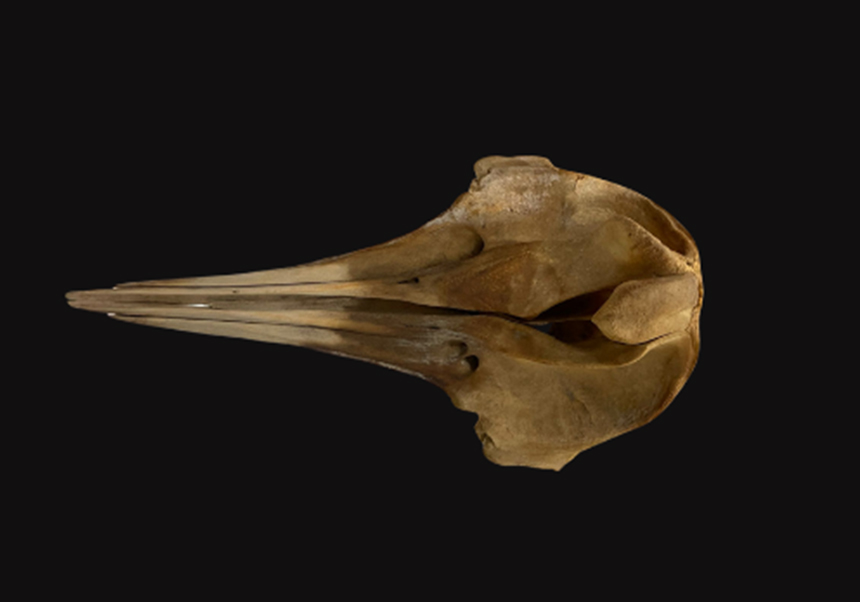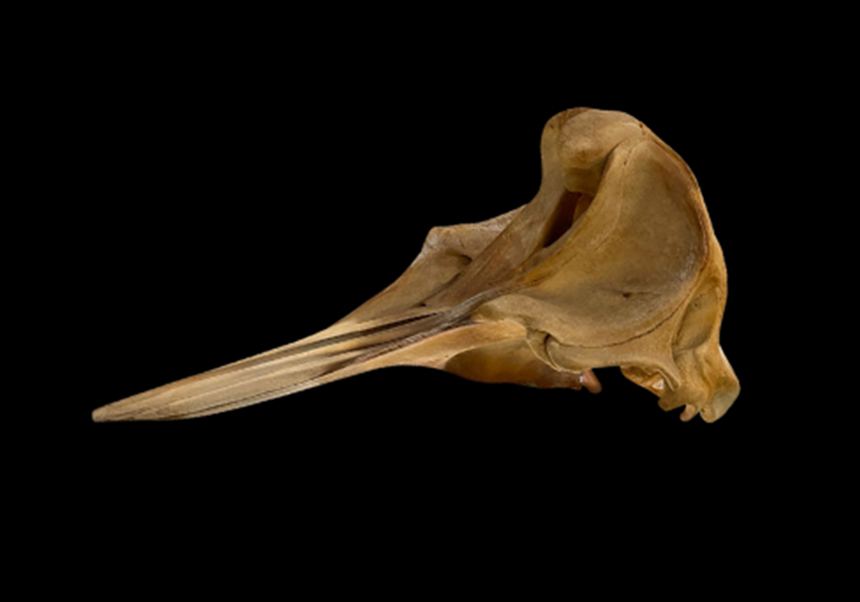Cuvier's Beaked Whale (Ziphiuscavirrostris). MUVHN-ZD0700. Historical collection of the University of Valencia.

The selected piece for this month (MUVHN-ZD0700) consists of a Cuvier's beaked whale or Cuvier's beaked whale (Ziphius cavirrostris) skull, currently on display in the Zoology room of the Museum of the University of Valencia's Natural History.
Beaked whales are large toothed cetaceans that have teeth, although they may not be visible in some species. All beaked whales belong to the Ziphidae family. Cuvier's beaked whale is of medium size among cetaceans; it has average lengths and weights of 6.4 meters and 3000 kilograms, with the potential to live up to 40 years. It is the known mammal that records the greatest depth of immersion and apnea time, reaching records of 137 minutes underwater and a depth of more than 3000 meters. They have a barely noticeable air spout, and their dives are carried out very smoothly, which, along with their evasive behavior, makes them a challenging animal to observe. On the surface, they have the appearance of an animal in which it is difficult to distinguish the different parts of their body, with a flattened mouth ending in a beak-like shape.
Cuvier's beaked whale (Ziphius cavirostris) is the beaked whale with the widest known distribution, spanning the Atlantic, Pacific, and Indian Oceans and various seas. In fact, individuals have been found as far north as the Shetland Islands and as far south as Tierra del Fuego. This species gets its name from the famous naturalist George Cuvier, who began studying its skull in 1823 when the animal was still unknown.
Modern study of these animals began in 1823 by Georges Cuvier based on a skull found years earlier on the coasts of France. From these remains, he described what he believed to be an extinct cetacean. It wasn't until 1870 that it was discovered that Cuvier's fossil was also a living species, and numerous findings of beaked whales with snouts from many parts of the world were reidentified as Cuvier's beaked whales.
Cuvier's beaked whale skull is asymmetrical, so its hemispheres are noticeably different. While the right hemisphere is more related to echolocation, the left is responsible for tasks such as breathing. Other things to consider are that males have a pair of prominent teeth in the lower jaw that they use in disputes, and the bones are very porous and store a high lipid content.
Images:



















